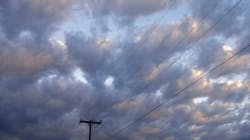Wood Pole Makers Respond to Ida
As utilities race to restore power to millions of customers in the wake of Hurricane Ida, wood pole treaters across the country are working hard to provide wood poles and crossarms needed to restore the power grid.
The historic winds and floodwaters significantly damaged electrical distribution throughout the south and northeast. The power of the storm was indiscriminate in its damage to the power grid, as overhead poles made of wood, steel, concrete and composite fiberglass were downed by winds of up to 150 miles per hour. Underground lines were also damaged as high water flooded underground vaults and circuit boxes.
Wood treaters are increasing production of treated wood poles and crossarms to help utilities turn power back on in storm-damaged areas. Wood poles can be produced much faster than other materials and can be quickly shipped to where needed.
“Utilities can count on wood pole treaters to get what they need to bring power back online. We’ve done so in the past and have the ability to get the poles and crossarms needed for restoration,” said Kevin Ragon, executive vice president of the North American Wood Pole Council (NAWPC).
Treaters have a long history of assisting utilities after natural disasters. Following Hurricane Katrina, a total of 92,000 wood poles and 90,000 crossarms were delivered within four weeks after the storm. In the wake of Super Storm Sandy, the industry provided some 65,000 poles and 103,500 crossarms in the weeks following the weather event.
Responding to Ida’s damage will be more challenging, with utilities remaining active with new construction and pole replacement during the past 18 months of the COVID pandemic. Also, there is more competition for the timber needed for poles as lumber and plywood prices rocketed to record levels.
Despite the widespread damage, millions of wood poles survived the gale-force winds. Wood poles have a unique capacity to handle overloads on the line that may be caused by branches and other debris falling across the lines.
Under national standards for wood poles, the natural variations in wood strengths are accommodated by a much larger safety factor in load carrying capacities. That means many wood poles may be stronger than the minimum design strengths assigned. By comparison, other materials such as steel are designed for much narrower strength variations, with more chance of failure when experiencing extreme loads beyond their designed capacities.
Wood pole manufacturers will be working closely with utilities to get replacement poles delivered where they are needed most. Some plants can treat up to 400 poles or more a day to provide the necessary supplies to restore power.
